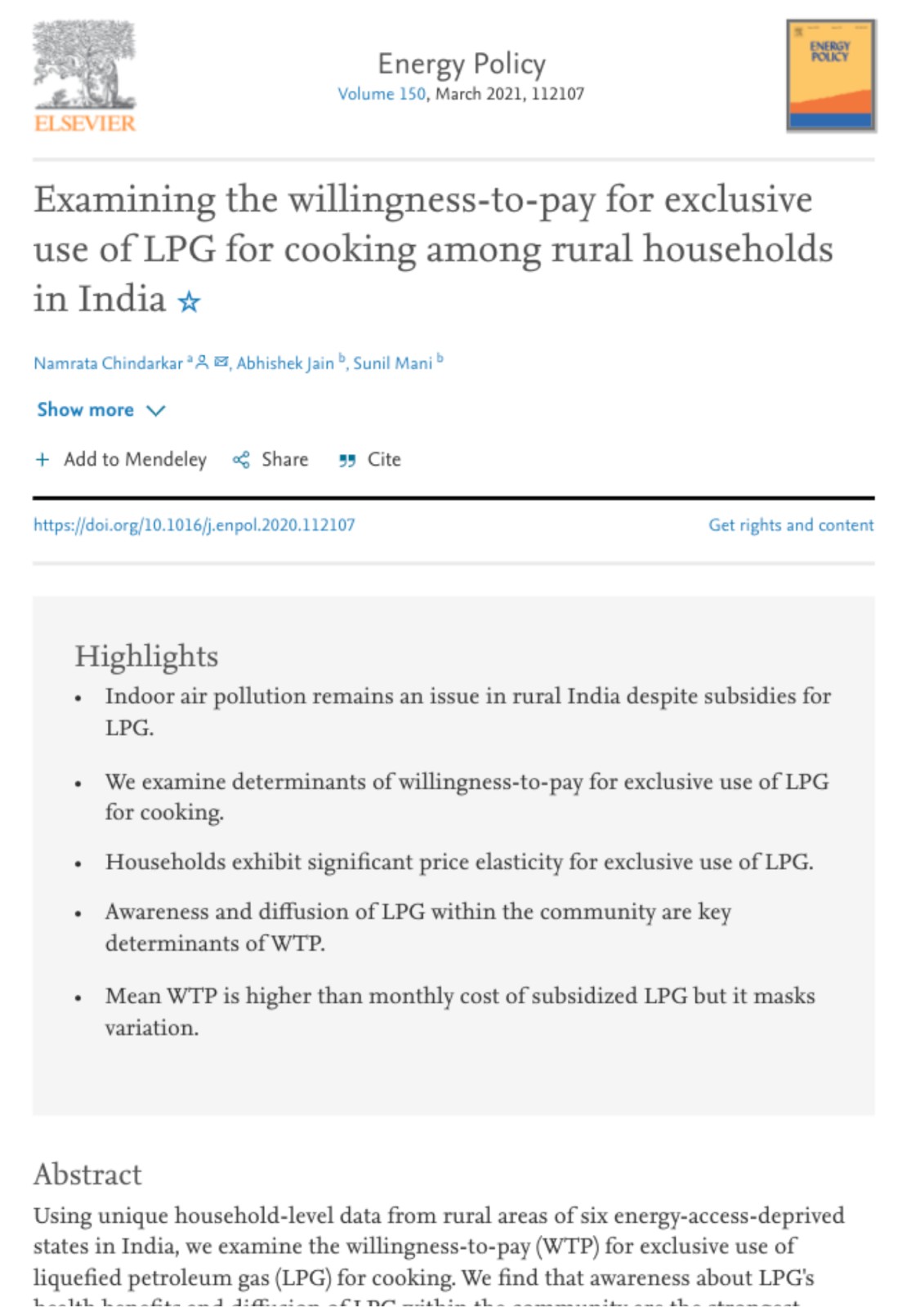Overview
This paper uses ACCESS2018 data to assess the determinants of the willingness-to-pay (WTP) for exclusive liquefied petroleum gas (LPG) use for cooking in rural India. The analysis is significant to inform the policy approach to design and target subsidies to promote sustained LPG use. The data was collected from the rural areas of six major energy access-deprived states in India in 2018.
Indoor air pollution, caused mainly by burning traditional biomass for cooking, leads to an estimated 500,000 premature deaths in India every year. While 97 per cent of Indian households have access to cleaner cooking fuel in the form of LPG, its exclusive use for cooking needs continue to remain low in rural areas. A key factor underlying low usage of LPG among economically poor households is the high recurring cost of the fuel i.e. LPG cylinder refills.
Key Highlights
- Households’ economic status positively determines the WTP for the exclusive use of LPG.
- Households with irregular and uncertain cash flows—those dependent on agriculture or daily wages—are less likely to pay for exclusive LPG use compared to households with regular cash flows.
- There is a negative association between free biomass availability (in the form of dung cakes) and WTP but only for Pradhan Mantri Ujjwala Yojana (PMUY) beneficiaries. Besides, households that incur a higher expenditure on purchasing biomass are more likely to pay for exclusive LPG use.
- Awareness about LPG's health benefits and its diffusion within the community as a cooking fuel, are the strongest positive determinants of WTP for exclusive use of LPG. This suggests the importance of community norms in positively influencing the WTP for exclusive use of LPG.
- Even though mean WTP is higher than the current effective monthly cost of subsidised LPG, there is a significant WTP variation across households. This suggests the need for additional measures to enable their cooking energy transition to cleaner fuels.
Predicted probability of accepting presented bid value
Source: Authors’ analysis
Key Recommendations
- Kick-start a targeted subsidy regime that can enable differentiated support to households based on their socio-economic condition (such as affordability thresholds, household economic index, and occupation or seasonality of income) to promote sustained LPG use.
- Establish direct benefits transfer (DBT) through an authorised direct debit mechanism such that households pay only the subsidised amount directly from the linked (payment) bank account to reduce the out-of-pocket expenditure.
- Identify alternative uses of freely available biomass, especially dung, to create an opportunity cost for these fuels. This will help in reducing rural households' dependence on biomass for cooking.
- Design LPG awareness campaigns such that both male and female members of the household participate.
A multi-pronged policy approach is necessary to nudge households towards exclusive LPG use. Extend higher subsidy support to economically vulnerable households, ensure community-level promotion, improve awareness about health benefits of LPG, and create alternative avenues for the use of readily available biomass.








